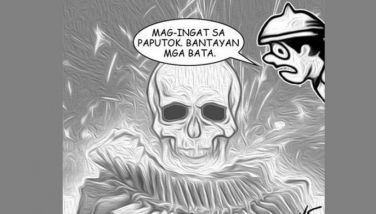R&D model: The Philippine medicinal plants’ development
August 11, 2005 | 12:00am
Nearly three decades ago, the government, through the then National Science and Development Board (NSDB), which subsequently became the National Science and Technology Authority (NSTA) and now the Department of Science and Technology (DOST), which created the Philippine Council of Health Research and Development (PCHRD) as the highest policy-making body for health research, gathered together a multi-disciplinary/multi agency group of researchers on medicinal plants to analyze the situation and hurdle the roadblocks to the development of herbal medicine in the country. The experts realized the need for financial and human resources and above all investment in research and development (R&D). For the natural products to be highly competitive, the missing link is science and technology.
In their desire to provide low-cost quality drugs and to cushion the effects of the escalating cost of medicine in the market, the group initiated the National Integrated Program on Medicinal Plants (NIRPROMP). The program strategy was to develop a new order in the investigation into medicinal plants departing from the old method of initial phytochemical studies prior to pharmacologic tests by developing a more rapid but still highly scientific screening process to determine the efficacy and safety of medicinal plants and thus, obtain a faster solution to the immediate and pressing needs of the country.
2. Multiagency/ multicenter – The following agencies, both government and private, academe, research institutes, medical centers, hospitals, were involved:
• UP System (Colleges of Medicine, Pharmacy, Agriculture, Institute of Chemistry);
• University of Santo Tomas;
• Ateneo de Manila University/PIPAC; and
• Jose Reyes Memorial Medical Center
1. Mission I – Production of crude drug preparations against common ailments:
• Mission I a – Formulation of decoctions and infusions from crude plant parts. One-hundred-two plants were subjected to pre-clinical trials and rapid clinical screening, involving toxicology, mutageneticity and bioassay, to establish efficacy and safety.
• Mission 1 b – Formulation, manufacture, quality control testings of pharmaceutical dosage forms (tablets, syrup, lotion, etc.) from plant materials and extractives.
a) The dosage formulations were subjected to pre-clinical trials (LD50, sub-acute, sub-chronic and pharmaceutical studies);
b) Clinical trials (Phases I, II, III); and
c) Appropriate cultural management and propagation techniques.
2. Mission II – In-depth studies leading to the development of drugs from semi-pure and pure plant constituents. Investigations done on Mission I b will be conducted on the identified isolated and purified active constituents.
• Identification of common ailments (top causes of mortality/morbidity) in the country;
• Identification of common plants which address the diseases based on folkloric claims in cooperation with 1,280 herbolarios in 800 barangays in the country; and
• Selection of plants based on availability, ease of propagation, cultural management and conservation. (To be concluded)
BrandSpace Articles
<
>
- Latest
Latest
Latest
October 14, 2024 - 11:00am
October 14, 2024 - 11:00am
October 11, 2024 - 12:49pm
October 11, 2024 - 12:49pm
September 30, 2024 - 8:00am
September 30, 2024 - 8:00am
September 26, 2024 - 2:00pm
September 26, 2024 - 2:00pm
September 3, 2024 - 1:00pm
September 3, 2024 - 1:00pm
Recommended






























